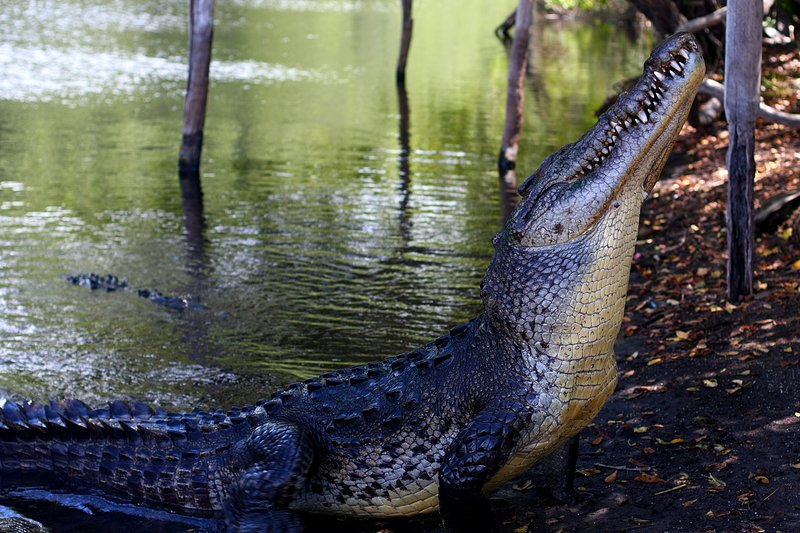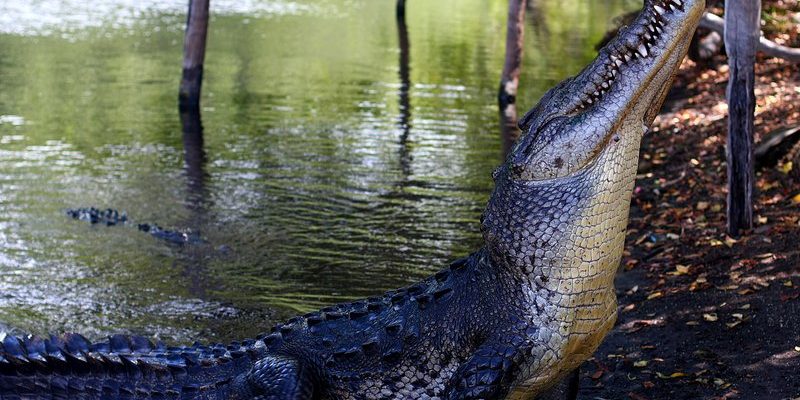
The American crocodile, scientifically known as *Crocodylus acutus*, is more than just a predator. It’s a master of its environment, living in places ranging from coastal waters of Florida to the brackish lagoons of Central America. With unique physical adaptations and behaviors, they’ve honed their skills to survive where many other animals might struggle. So, let’s dive in and explore how these remarkable reptiles manage to thrive despite the odds.
Physical Adaptations: Built for Survival
One of the most notable aspects of the American crocodile is its impressive physical adaptations. These reptiles have evolved over millions of years, developing features that make them incredibly resilient in harsh environments.
First off, their tough skin is a game changer. Covered in armored scales, it acts as a protective barrier against predators and the harsh elements of their habitats. You might think of it like a suit of armor, making it tough to penetrate. Plus, this skin helps them retain moisture, which is key for survival, especially in dry regions.
Additionally, American crocodiles have a strong swimming capability. Their long, muscular tails propel them swiftly through water, allowing them to escape danger and hunt effectively. Think of them as the ultimate stealthy swimmers, gliding silently through their watery homes. They can stay submerged for extended periods, thanks to special adaptations in their lungs, which allow for efficient oxygen exchange.
Lastly, their sharp teeth and powerful jaws enable them to catch and hold onto various prey. They are opportunistic hunters, consuming fish, birds, and even small mammals when the chance arises. This versatility in diet is another reason why they can thrive in diverse environments.
Behavioral Adaptations: Smart Choices in Tough Times
Next up, let’s talk about the behavioral adaptations of the American crocodile. These reptiles have a range of strategies that help them navigate the challenges of their environment.
A fascinating behavior is their basking habits. Crocodiles often sunbathe on riverbanks or sandy shores. This isn’t just for fun; it helps regulate their body temperature. By soaking up the sun’s rays, they maintain the warmth needed for digestion and energy. It’s like charging your phone—getting that vital energy boost to keep functioning.
Another critical behavior is nesting strategies. Female American crocodiles build nests made of vegetation and soil, strategically placing them near water sources. This isn’t just a random choice; it’s a smart move to protect their young from predators. By laying eggs in areas that offer some cover and water access, they increase the chances of survival for the hatchlings.
Additionally, crocodiles are known for their social interactions. While they might seem solitary, they actually communicate with one another using body language and sounds. This social behavior can help them find mates and establish territory, ensuring they can thrive in their selected environments.
Habitat: The Versatile Environment
When it comes to habitat, the American crocodile is incredibly adaptable. They thrive in a variety of settings, including brackish marshes, coastal lagoons, and freshwater lakes.
Brackish water habitats, a mix of salt and freshwater, are some of their favorite spots. Here, they find abundant food options and safe nesting grounds. This adaptability allows them to move between saltwater and freshwater, making them highly versatile in their feeding habits. By shifting between these ecosystems, they can escape harsh conditions or predators.
Additionally, they often inhabit areas where freshwater rivers meet the ocean. These transitional zones are rich in biodiversity, providing plenty of fish and crustaceans to munch on. The ability to capitalize on different environments is a smart survival tactic that sets them apart from other reptiles.
Furthermore, during the dry season, they can endure long periods of drought. Their ability to hold their breath for extended times means they can stay submerged in small water holes, allowing them to conserve moisture. It’s a classic case of survival of the fittest, adapting to changing conditions while others might struggle.
Diet: An Opportunistic Predator
What do American crocodiles eat? Well, they are opportunistic predators. Their diet varies based on what’s available, making them highly adaptable during tough times.
Primarily, these crocodiles feast on fish, which makes up a significant part of their diet. Swimming effortlessly in the water, they use their keen eyesight to spot prey from afar. Then, with a sudden burst of speed, they can engulf their catch in their powerful jaws. It’s like watching a well-coordinated strike that rarely goes wrong.
Besides fish, they enjoy snacking on birds and small mammals. In fact, the American crocodile’s versatility extends to eating whatever is available, including carrion when food is scarce. This means that even in harsh environments where prey might be limited, they find a way. It’s all about flexibility in their eating habits, adapting to whatever their surroundings provide.
You might be wondering how they manage to hunt effectively in various conditions. Their stealthy approach plays a big role. Crocodiles can remain completely still for long periods, waiting for the perfect moment to strike. It’s a patient game of hide and seek, and when they finally do attack, it’s with impressive speed and power.
Life Cycle: Thriving Through Challenges
The life cycle of the American crocodile plays a crucial role in its survival. From egg to adult, each stage faces its own challenges and adaptations.
Eggs are laid in nests that females construct, often near water bodies. The hatchlings are vulnerable immediately after they break free from their eggs, facing threats from predators, including birds and larger fish. However, once they emerge, the mother often helps guide them to the water, showcasing the crocodile’s maternal instincts.
Once in the water, the young crocodiles have numerous challenges ahead. They must quickly learn to find food and avoid becoming someone else’s dinner. The ability to adapt their diet is vital during these early stages. Developing skills and learning how to hunt are essential for surviving the first crucial years of life.
As they grow, their physical adaptations kick in, helping them thrive even in harsh circumstances. Over time, they gain strength and size, making them less vulnerable to predators. By the time they reach adulthood, they are formidable hunters in their own right, ready to face whatever challenges their habitats throw their way.
Conservation Challenges: Surviving in a Changing World
While the American crocodile is a remarkable survivor, it faces significant conservation challenges. Habitat destruction, pollution, and climate change pose threats to their populations.
Human activities, such as urban development and agriculture, often encroach on their habitats. Wetland drainage reduces available nesting areas and food sources, increasing competition among individuals. Without proper conservation efforts, these crocodiles may struggle to survive in the wild.
Pollution is another significant concern. Contaminated waters can impact their health and the availability of prey. When food sources are compromised, it creates further challenges for these already resilient animals.
Lastly, climate change is causing shifts in weather patterns that disrupt their breeding and feeding grounds. Rising sea levels threaten coastal habitats, while more extreme weather events can devastate the ecosystems they depend on.
Ultimately, understanding these challenges is vital for ensuring the future of the American crocodile. By focusing on conservation efforts, we can help protect these incredible creatures and the ecosystems they inhabit.
In conclusion, the American crocodile is a true testament to survival in harsh environments. With its unique adaptations, clever behaviors, and diverse habitats, it thrives where many would struggle. By learning about these amazing reptiles, we can appreciate the intricate balance of nature and the importance of preserving it for future generations.

